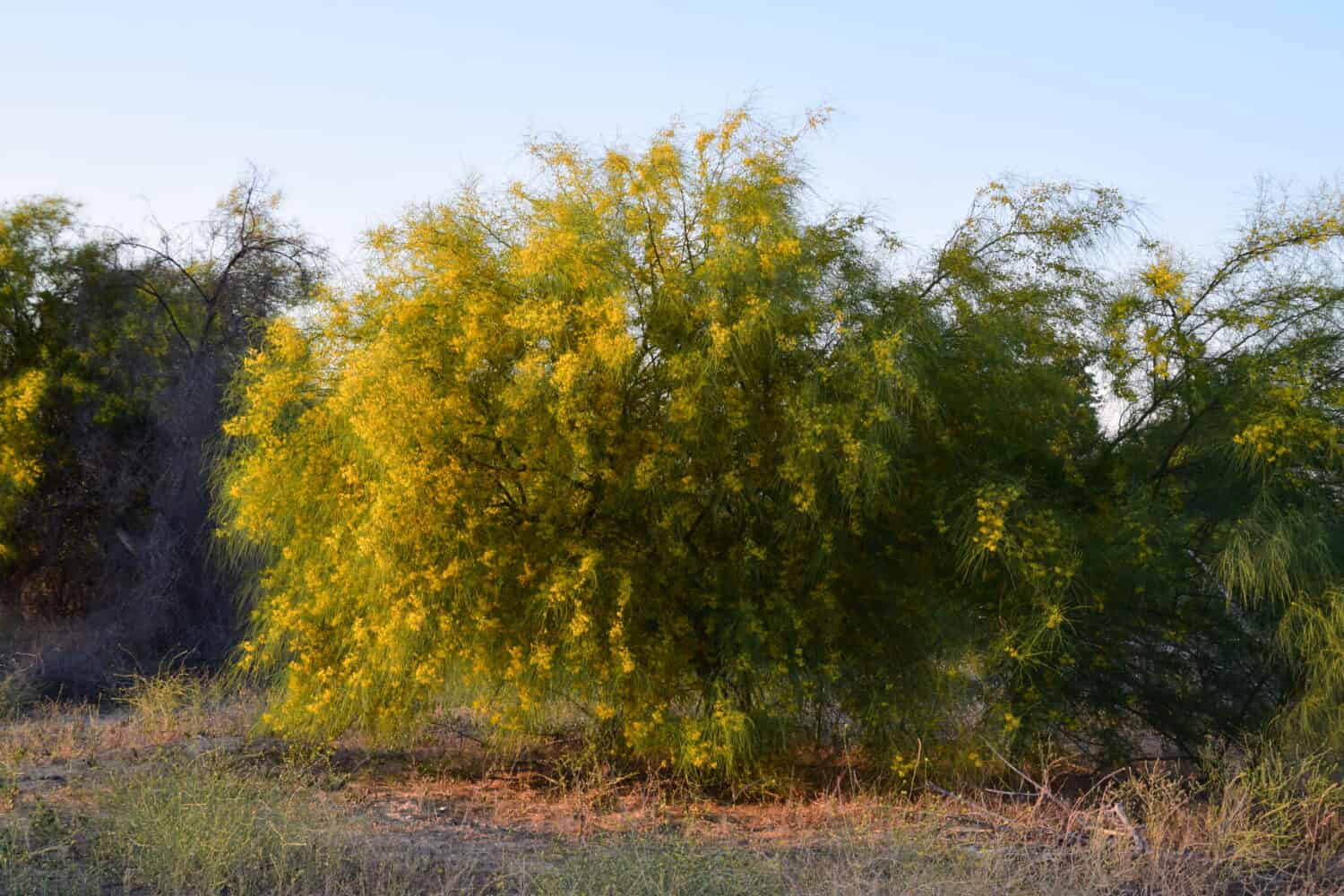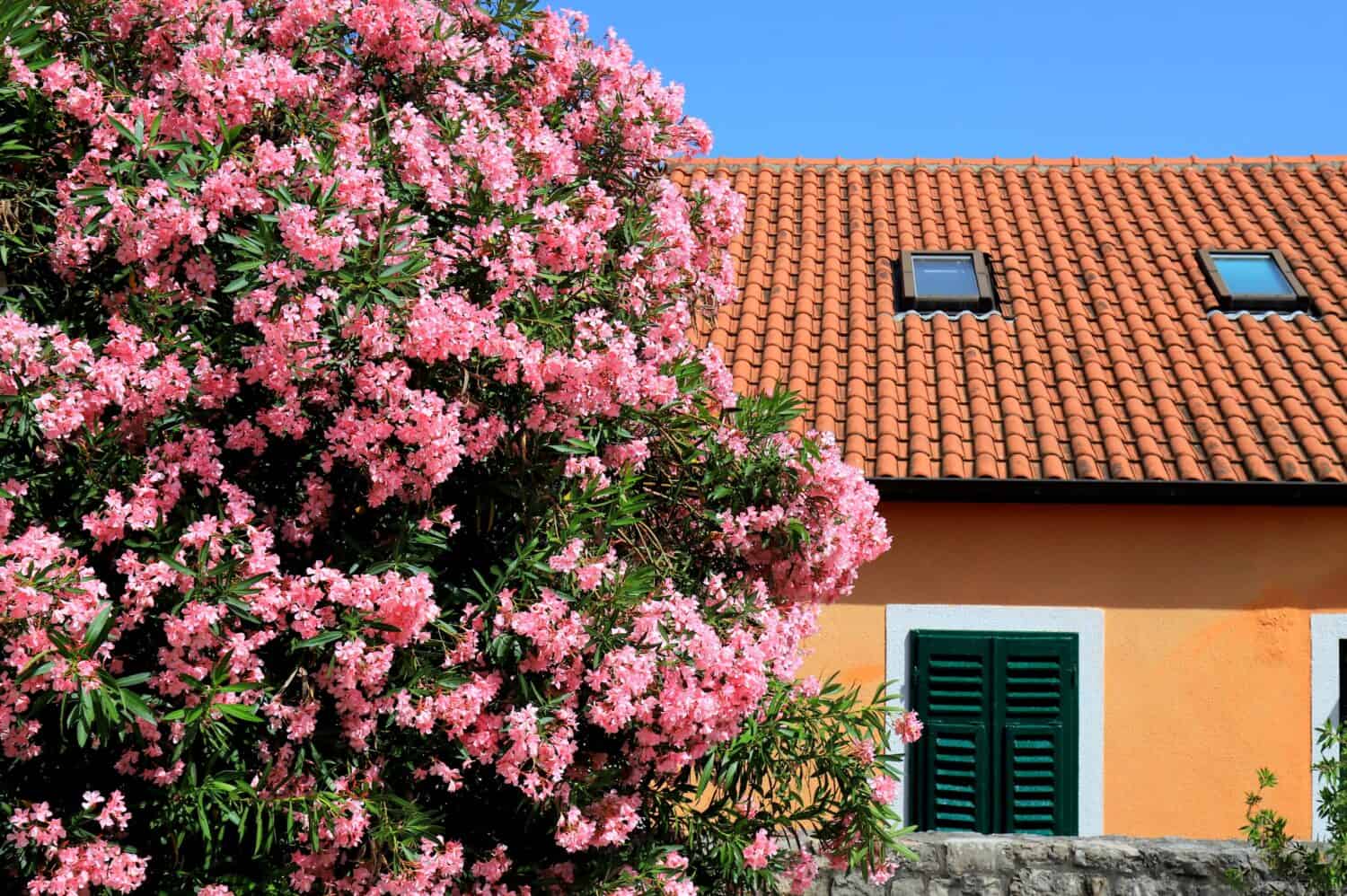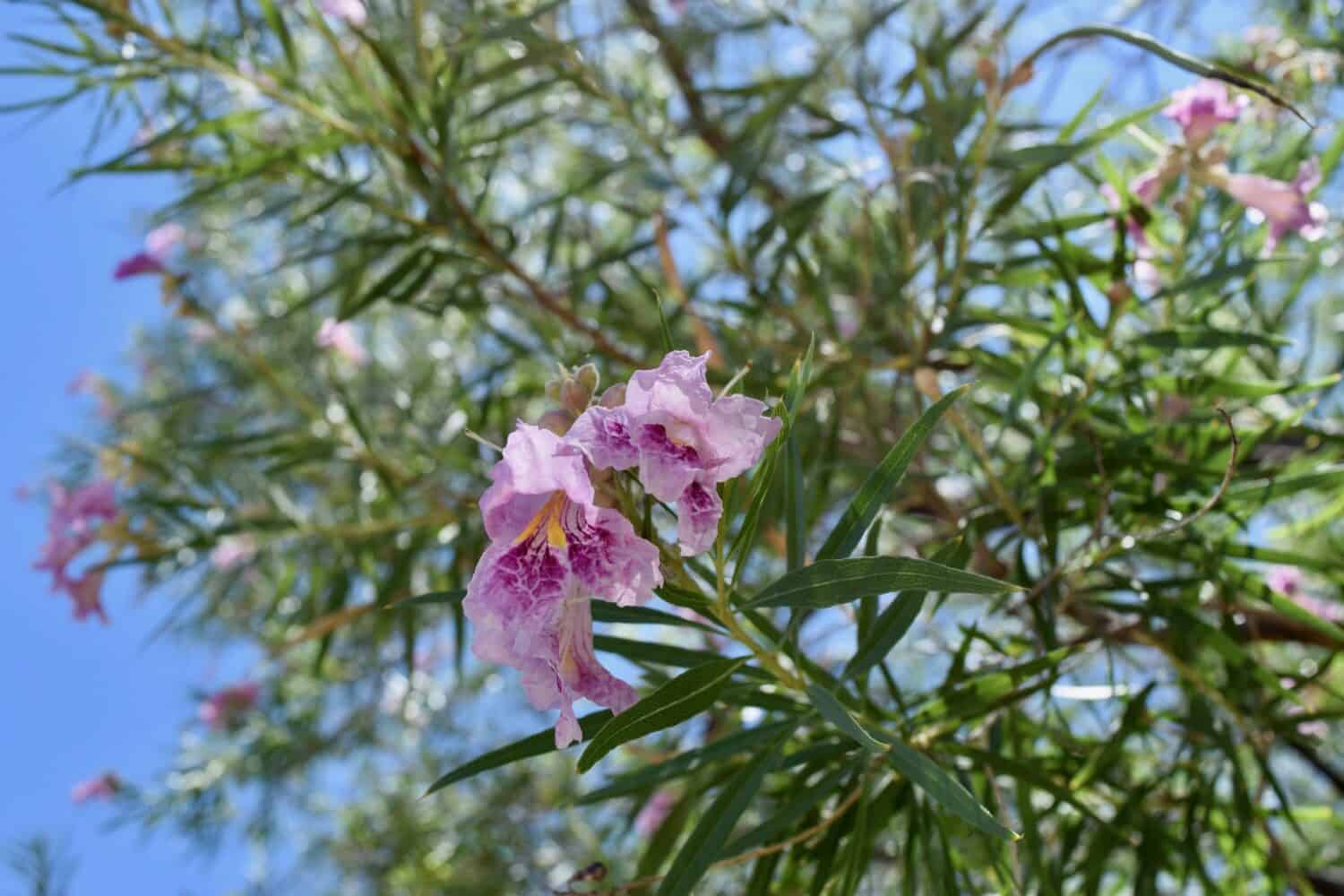When people think of the city of Las Vegas, Nevada, imagery of casinos where people spend loads of money gambling often comes to mind. Nightclubs, upscale restaurants, flowing alcohol, and showgirls probably come up, too. However, there’s much more to Las Vegas than flashing lights and nightlife experiences. Las Vegas doesn’t get enough credit for its stunning nature or breathtaking views. One of the most gorgeous details of Las Vegas happens to be some of the beautiful flowering trees that survive in the area. Most trees sprout leaves, but not every tree can grow healthy flowers. Here’s a breakdown of some of Las Vegas’s most noteworthy flowering trees to watch on your next trip to Sin City.
Museum Palo Verde Trees

Museum Palo Verde Trees are growing in nature.
©sc_images/Shutterstock.com
While in Las Vegas, you might come across some Museum Palo Verde trees. They provide a lot of shade thanks to their wide-spreading canopies and extensive growth patterns. Las Vegas is the type of city that needs as much shade as possible to protect people from the hot heat of the sun. For this reason, these trees are certainly appreciated. The flowers on Museum Palo Verdes are bright yellow, and the trunks are bright green. Any concerns you might have about cutting your fingers on thorns can also go out the window when it comes to Museum Palo Verdes. These are thornless trees that won’t accidentally spike you at any point. Museum Palo Verdes can grow up to 30 feet tall and 40 feet wide – give or take.
Oleander Trees

Oleander Tree with pink blooms.
©rospoint/Shutterstock.com
You’ll be able to find Oleander trees thriving in Las Vegas due to their sturdiness and resilience. This evergreen desert tree is typically found in shrub form but can still successfully grow into full-fledged flowering ornamental trees. Oleanders have been around since the Roman era, which means they’ve got a long history behind them. There’s proof of that based on the historical wall paintings that discoverers have found in Pompeii. Oleander trees can bloom in a variety of colors throughout the entire year. Some of the most common colors you’ll find them in are pink, white, and red. Since Oleander trees are considered low maintenance, many Las Vegas homeowners looking to plant trees in their yards can easily go this route. They don’t require loads of watering or attention to thrive and survive.
Crape Myrtle Trees

Crape Myrtle Trees with dark pink flowers.
©TonyNg/Shutterstock.com
Trees in Las Vegas that offer bright and vibrant colors are worth exploring and discussing. The Crape Myrtle Tree is beyond special due to its orangey-red flowers that seemingly bloom with an abundance of confidence and flair. These trees are strong enough to thrive despite Las Vegas’s scorching summer heat. The blooms live on through the hot months of June, July, and August each year without fail. Keep in mind that the flowers aren’t always going to be an orangey-red shade on this tree species, though. You may also come across Crape Myrtle Trees in Las Vegas, with lovely pink, purple, and white flowers sprouting on top.
Bottlebrush Tree

Bottlebrush Trees with red blooms.
©Elzloy/Shutterstock.com
Since the Bottlebrush Tree can survive with little water, it’s another fabulous option for tree lovers in the Las Vegas area. As a Las Vegas local with a garden to build, it’s up to you to determine whether you want to see Bottlebrush flowers on shrubs or trees. Seeing them in the form of small-sized trees is a beautiful route to take. To successfully plant a Bottlebrush Tree that will grow in the desert, you’ll start pruning at the soil level. It’s also essential to remove any broken tree limbs and dead stems that may get in the way. These trees don’t grow fast, but that doesn’t mean you won’t see progress. Bottlebrush Trees are originally from Australia, meaning they aren’t considered “true” desert plants. Regardless, these eye-catching trees are drought-tolerant and hugely important in Las Vegas.
Desert Willow Trees

Image: SagePhotography111, Shutterstock
©SagePhotography111/Shutterstock.com
Although Desert Willow Trees originally come from Mexico and the southwestern US, they can survive and thrive in a place like Las Vegas with dry and hot weather. They’re well-adapted enough to live on through the scorching heat of summer with beautiful flowers to admire. The flowers are shaped like trumpets and come in white, pink, and purple shades. These trees are fantastic for wildlife residing in Las Vegas since they attract hummingbirds, bees, and butterflies. These low-maintenance trees need direct sunlight to survive, which they get a lot of in the desert.
Flowering Trees That Won’t Survive in Las Vegas

©Sean Pavone/Shutterstock.com
It’s best to note which flowering plants won’t survive in Las Vegas to avoid wasting time in your garden or backyard. As a non-Las Vegas local, it would also be a waste of time to look for certain flowering trees since there are several that you’ll never come across. Flowering plum trees are gorgeous, but they’ll never do well in Las Vegas since they are tropical. Magnolia trees are also difficult to find in Las Vegas. These trees don’t thrive in particularly warm or dry climates. Hydrangea trees are another non-factor in the Las Vegas area. Blooms last so much longer when they have shade to hide underneath. In Las Vegas, natural shade to cover trees isn’t necessarily too common.
Thank you for reading! Have some feedback for us? Contact the AZ Animals editorial team.







